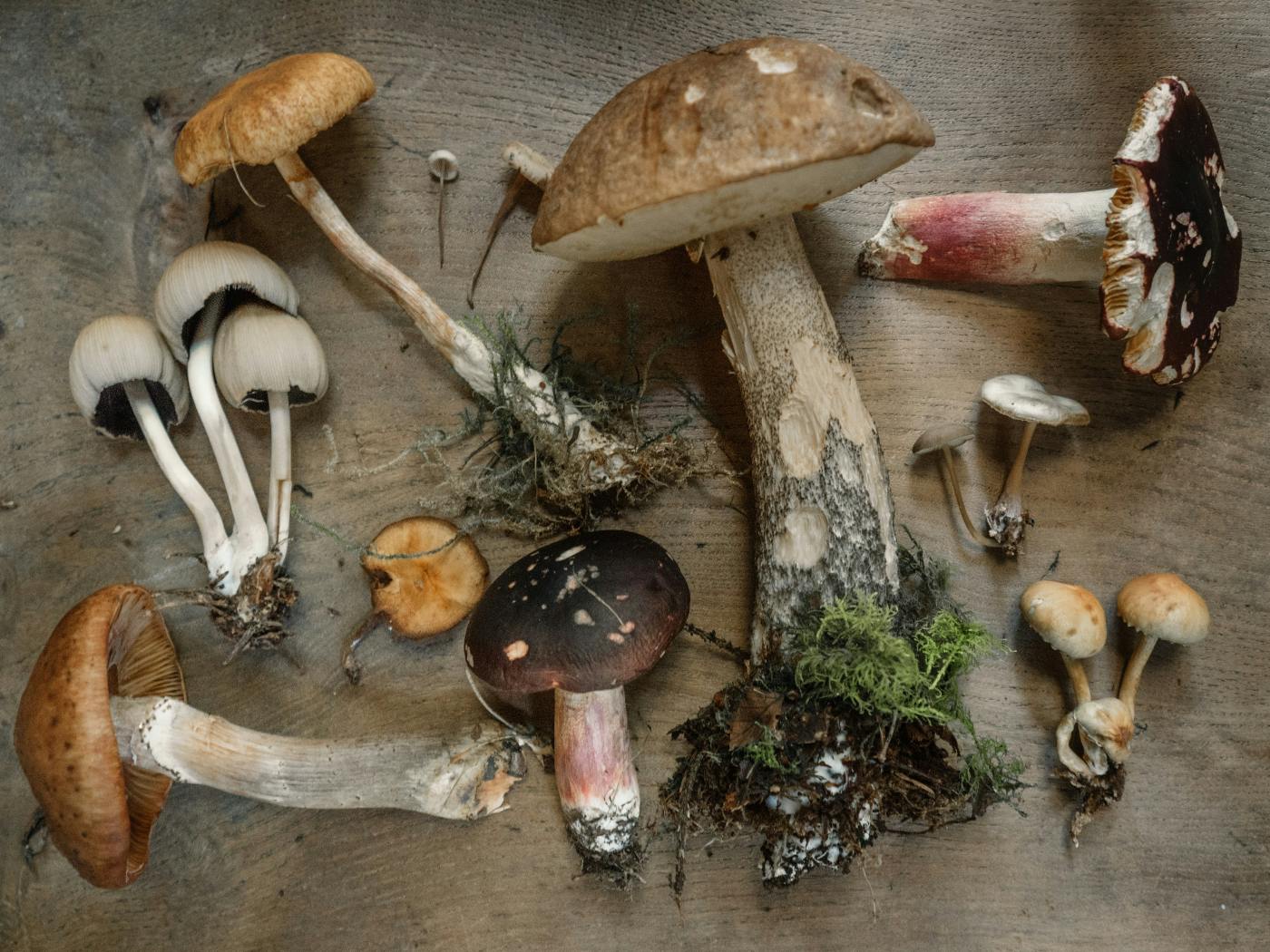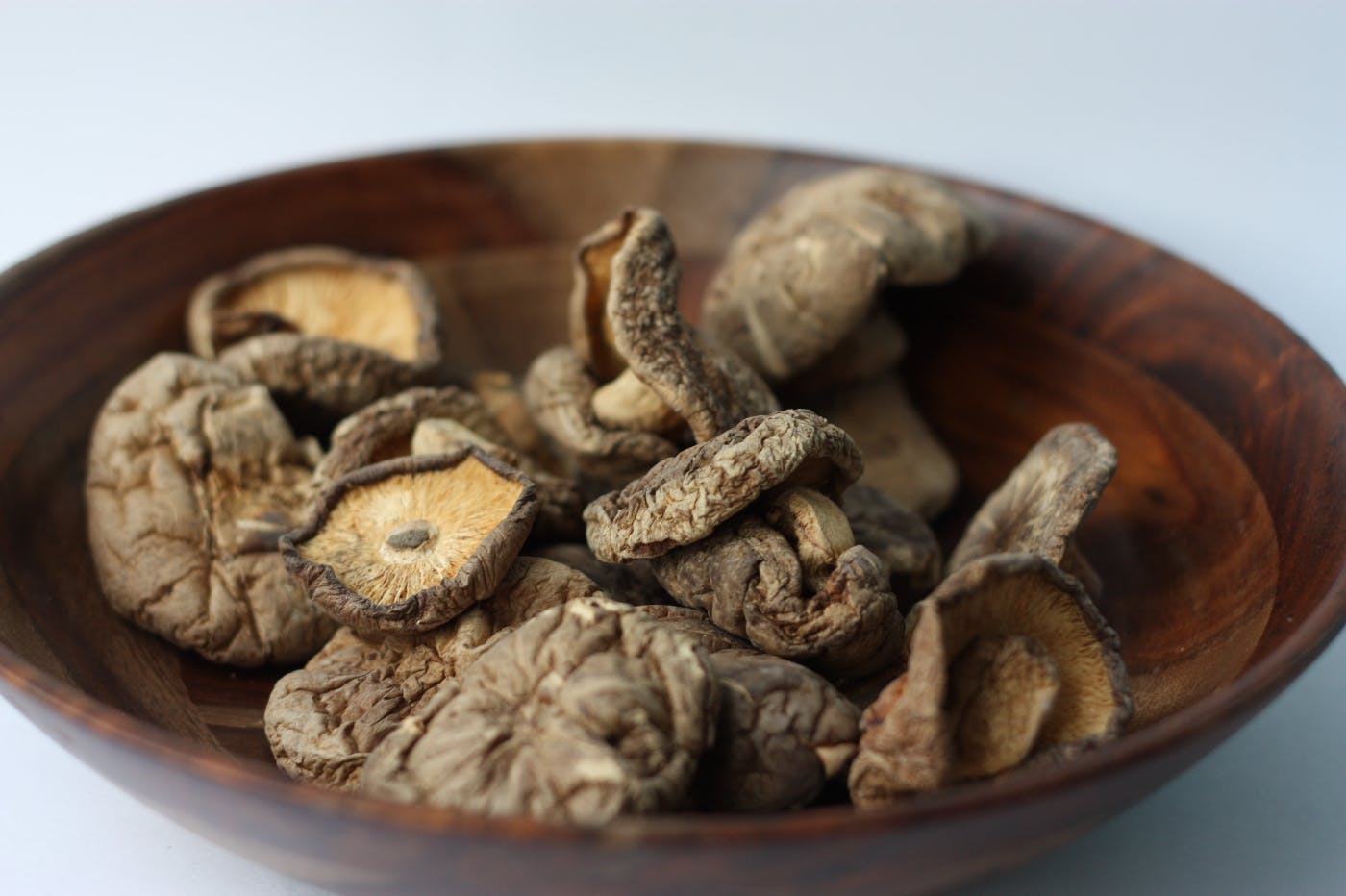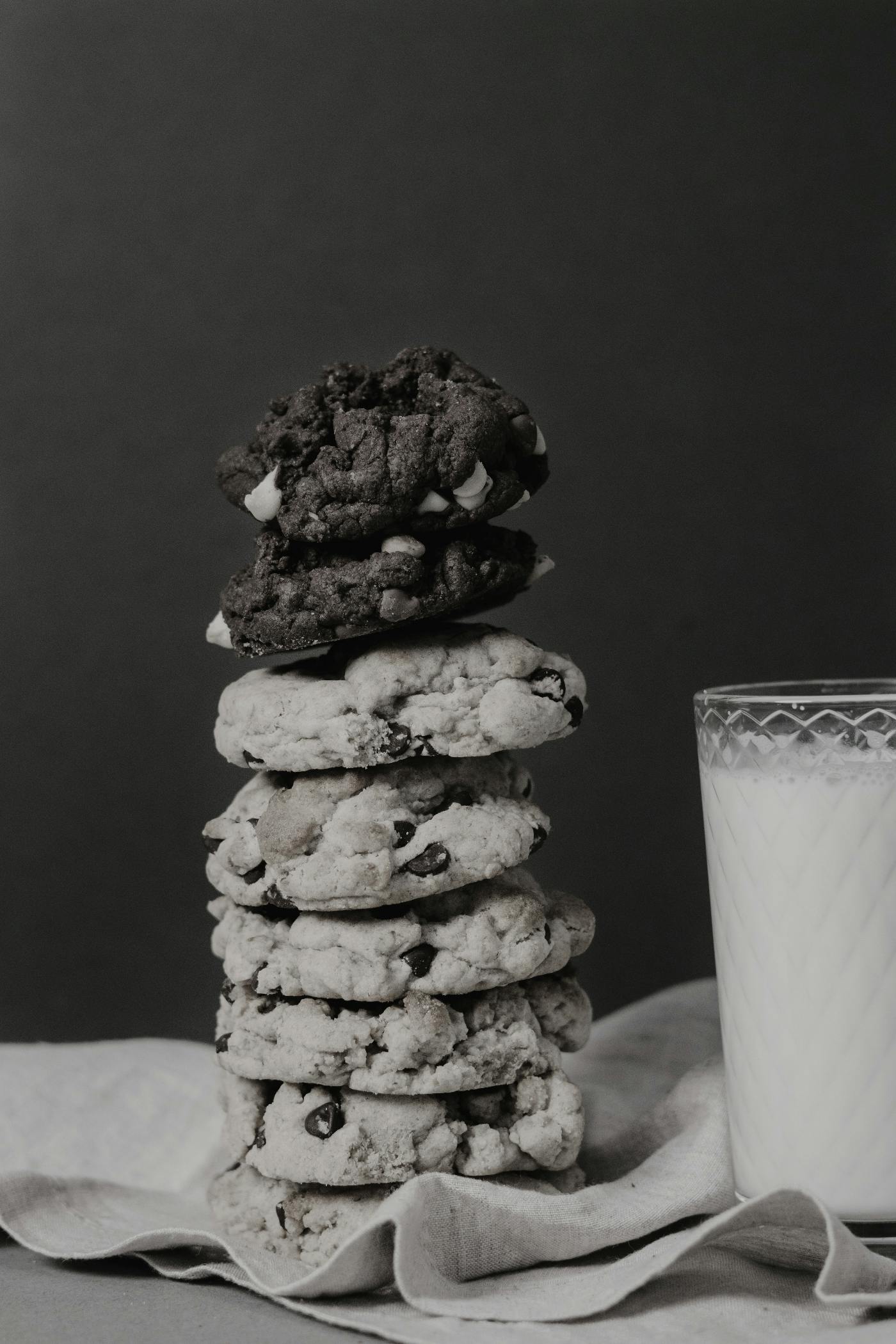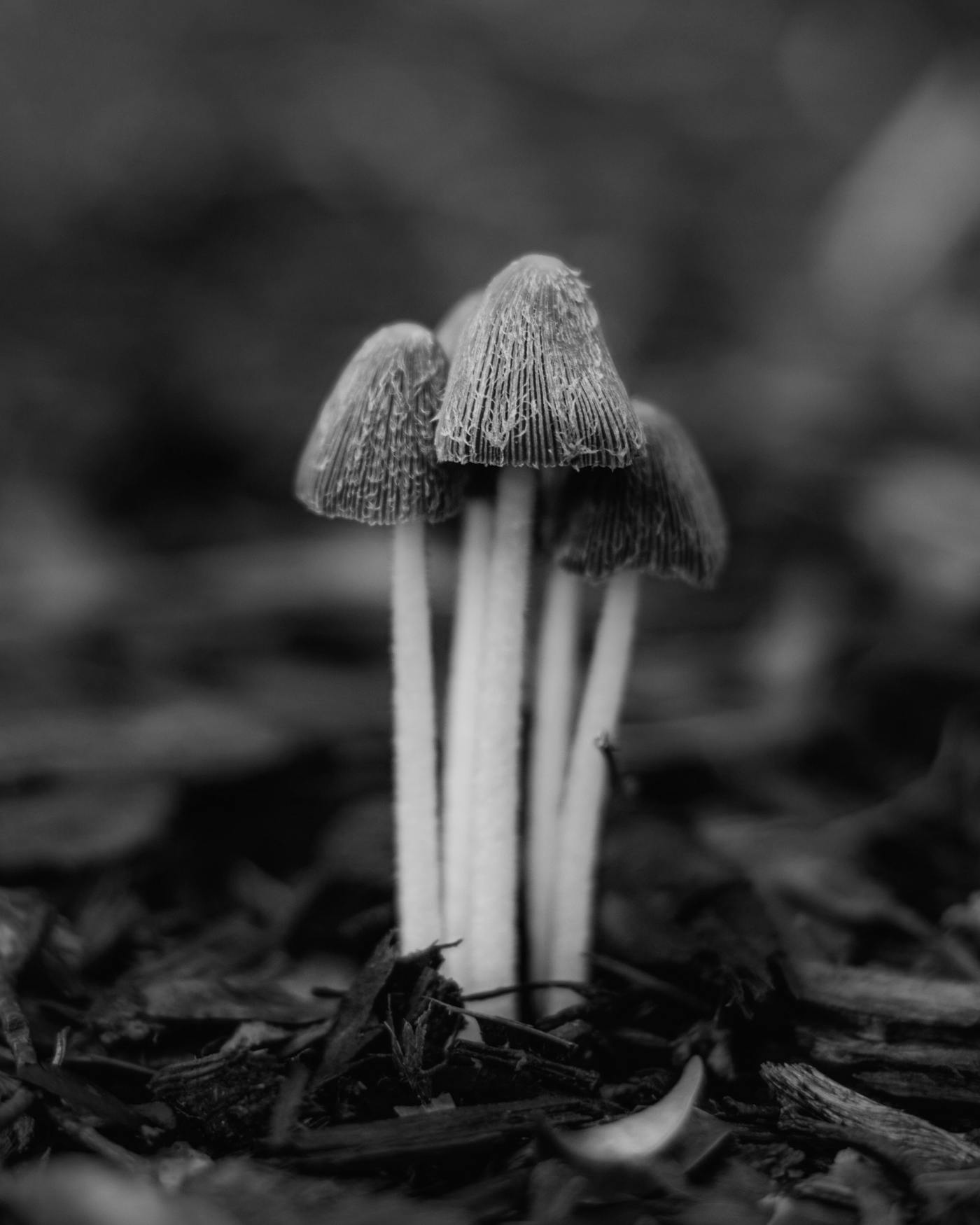
If you’re a mushroom fan, you know fall is the perfect time to gather, cook and feast on these delightful fungi. Mushrooms are hearty little devils that go great in soups, salads, dressings, side dishes, stuffed, sauteed, breaded, and fried, and these little buggers have medicinal value too!
Fall has arrived. The days are getting shorter, the nights longer, and the air has a crisp chill on the morning walk. Fall is a great season; although it portends death that comes with winter, it leaves with blazing colors, beautiful night skies, and, of course, mushrooms.
If you’re a mushroom fan, you know fall is the perfect time to gather, cook and feast on these delightful fungi. Mushrooms are hearty little devils that go great in soups, salads, dressings, side dishes, stuffed, sauteed, breaded, and fried, and these little buggers are the Bo Jackson of the culinary world.
Many folks shy away from mushrooms, primarily due to their fungus classification. But once you know a little about mushrooms, it’s easy to make friends with them. So here we’ll give you a little information about mushrooms and a lovely recipe to start with in your kitchen. Let’s go.
What is a Mushroom
All mushrooms are fungi, but all fungi are not mushrooms. Some people think mushrooms because they are a fungi, are the same as mildew or other types of fungi. Not true! Mushrooms sit in the Kingdom of Fungi, but over 144,000 other known species occupy that kingdom. These include mildew, molds, yeast, and rust.
Due to their edible nature, mushrooms are sometimes considered plants, but they aren’t. Nope, they are not part of the kingdom Plantae, so they are not plants.
This is a plant; this is a mushroom
Mushrooms are heterotrophs. And heterotrophs are organisms that cannot produce their own food. Instead, they take nutrition from other sources of organic carbon, like plants and animal matter, usually animal poop. In the food chain, mushrooms are primary, secondary, and tertiary consumers, but they are not producers.
Conversely, plants are autotrophic, which means they can create their own food from simple organic compounds.
Cell structure in plants and mushrooms is different as well. While both have cells, in a plant, the cell walls consist of cellulose, yet in a mushroom, the cell walls are created from complex polysaccharides: glucan and chitin. A mushroom’s cell wall protects it from predators and enhances its structural integrity.
This Section X-Rated, but not really
When it comes to reproduction (titter), mushrooms have it both ways. Easy now, this is a family blog. They can reproduce sexually and asexually.
Sexual mushroom reproduction occurs when one mushroom meets another mushroom, and they go on a date, maybe to a mound of deer dung; they eat, they chat, and then, one suggests they go back to their place and see what develops. Of course, none of that is true, but wouldn’t it be funny if that was how they did it? Actually, sexual reproduction occurs when a mushroom releases its spores, and the spore of one mushroom meets the spore of another mushroom, and a new mushroom is formed. Much like your mom and dad told you about that day you had the awkward “talk.”
Asexual reproduction involves fragmentation or budding. In this process, the mushroom basically copies itself. In both cases, the spores that live in the gills, the slits found under the mushroom cap, help in reproduction.
Where to find mushrooms
Where specifically depends on the type of mushroom you’re talking about; however, most mushrooms thrive in damp, cool areas rich in nutrients. This includes the base of trees, under pieces of wood that are decayed, and in gardens. Their specific location, as we mentioned, depends on the type of mushroom.
How many types of mushrooms are there, you ask? Well, let’s get into that now.
3 Main Types of Mushrooms

As the title of this section suggests, there are three main types of mushrooms.
- Saprotrophic mushrooms. These mushrooms feast on dead and decaying matter while aiding in decomposition. Saprotrophic mushrooms release special enzymes that encourage the deterioration of organic matter. Shiitake, morels, oyster, and button mushrooms all belong to the saprotrophic category of mushrooms.
- Parasitic mushrooms. Some fungi are designed to feed off other plant life. Detrimental to the host plant, parasitic mushrooms provide no benefit to their host. Examples of parasitic mushrooms include chaga and lion’s mane.
- Mycorrhizal mushrooms. This type of mushroom gives and receives benefits from other plants. The mycelium is often supported by and dependent upon the roots of other plants for structure. Mycorrhizal mushrooms also help hydrate a plant that provides sugars to return the favor. In this symbiotic relationship, both the mushroom and plant can grow stronger and larger. Mushrooms in this group include porcini mushrooms and truffles.
Though there are three types of mushrooms, all mushrooms have some similar traits. These are,
- Stalk-and-cap appearance. The most recognizable mushrooms with stalks and caps contain many edible varieties, such as the button mushroom and portobello mushrooms. Unfortunately, poisonous mushrooms, such as the Amanita bisporigera or “destroying angel,” also have a cap and stalk, making it challenging to discern edible mushrooms from their dangerous counterparts.
- Mycelium. This is the actual fungus from which what we refer to as mushrooms form. A single mushroom can be tied to a vast underground mycelium that spans acres. To date, the largest mycelium found was in Oregon and is said to permeate 1,500 acres of land.
- Spores. All mushrooms produce spores, but the fate of the spores differentiates types of mushrooms from one another. Some mushroom spores are fertilized sexually, while other spores need to land nearby to produce a new mushroom.
- Bowl-like or planked, wavy appearance. Not all mushrooms follow a typical shape, and spherical mushrooms, like the edible puffball mushroom, demonstrate great physical differences in the mushroom world. Other mushrooms, such as those seen creeping up the side of a tree, are planked and sometimes wavy in shape. A popular example is the oyster mushroom, which is often found growing on dead tree trunks or the bark of birch trees.
Those are the basics; however, some mushrooms don’t fit neatly into one of these categories, like the morel, which has flesh that looks like a tiny tree or a brain. Also, the Enokitake mushroom, a staple in Japanese cuisine, has the typical cap and stalk appearance, but the stalks are very long, giving the mushroom the look of a bunch of straw.
Mushrooms Have a Wide Flavor Profile and Huge Health Benefits

There are great nutritional benefits to munching mushrooms. They are non-fat, low in calories, and so versatile. They have a broad flavor profile from light and airy to dark and pungent, with all areas between being covered. This wide flavor profile gives chefs a variety of ways to use them.
As for the health benefits, mushrooms are full of goodness. Mushrooms have properties that boost the immune system, fight depression, improve focus, and manage stress. They are also anti-cancer and anti-inflammatory. They are full of antioxidants, help in weight loss, prevent diabetes, strengthen bones and reduce cholesterol levels. They are also packed with B and D vitamins and are high in beta-glucan.
Good tasting, versatile, and good for you, and they grow naturally all around us; they’re like nature's perfect medicine cabinet.
These are the ten most popular edible mushrooms.
- White button
- Cremini
- Portobello
- Shiitake
- Chantarelle
- Porcini
- Enokitake
- Lion’s mane
- Morel
- Shimeji
Mushrooms are nature’s jack of all trades, from medicine to coffee, energy, and even vegan leather; there seems to be nothing these little wonders can’t do. Add some to your grocery list and enjoy the delectable goodness of the humble mushroom.
***

Paul here, your humble copywriter. I want to add this sort of recipe to this article because cooking with mushrooms shouldn’t be something you’re afraid of. I am not a great cook, but I have had some wonderful mushroom dishes over the years. I recently moved to Washington, and a new neighbor gave me a bag of a variety of fresh mushrooms he picked himself, which I decided to use immediately. So, recalling the past dishes, I cobbled together this mushroom recipe, and you know it turned out pretty good, so I am passing it on to you. It’s easy and open to all kinds of adaptation. Enjoy!
Copywriters Mushrooms
You’ll need the following:
- 2 pounds of a variety of mushrooms
- Half a pound of diced pancetta
- 3 cloves of garlic
- Two shallots
- 3 tablespoons of butter
- Half a cup of cooking oil
- Finely shredded asiago cheese
- A lemon
- Chopped chives
- Tamari
You'll Do The Following:
- Heat up an iron skillet on medium and get it good and hot.
- Drop in the pancetta and reduce it, remove it from the pan, and set it aside on a paper towel
- Add oil
- Add mushrooms, coat them in the oil, and then let them sit for about 3 to 4 minutes.
- Turn them so all sides are cooked, and let them sit for another 7 minutes
- Preheat the oven to 350 and lower the heat on the mushrooms
- Drop in the butter, garlic, shallots, and tamari and stir
- Let them sit for another 3 to 5 minutes
- Squeeze in the juice of half a lemon
- Let sit for about 3 more minutes
- Add pancetta back and stir
- Cover the mushrooms with asiago cheese and then put the whole thing in the oven for about 5 minutes.
- The cheese should be melted over the top and a little brown
- Remove from the oven, let sit for a few minutes, top with the chopped chives and then serve
Again, I’m not a professional chef, and I know there are those who are balking at the butter and cheese on these shrooms but give it a try. If you’re really interested in more mushroom recipes, head on over to This Old Chef, he’s got some good things on the burner.
I hope you enjoy the recipe, and at the very least, I hope you’ve gained a new love for the versatile, delicious, medicinal mushroom.

